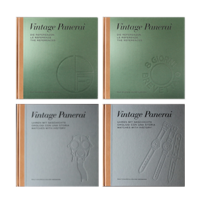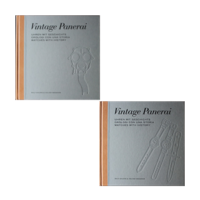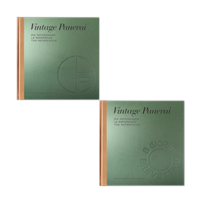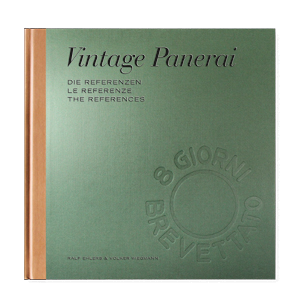The 3646 / Type D “Kampfschwimmer” @ Dr. Crott is online
by Volker on Apr.11, 2018, under Allgemein
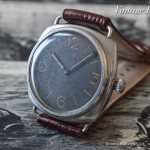 We introduced this watch, which is new to the market, a few weeks ago here, and the online catalogue of Dr. Crott Auctioneers now features the Ref. 3646 / Type D “Kampfschwimmer” with anonymous sandwich dial and Rolex Cal. 618 / Type 1 movement listed as lot 114. The 97th Auction will be held on 12 May, 2018 at the Sheraton Frankfurt Hotel, Airport.
We introduced this watch, which is new to the market, a few weeks ago here, and the online catalogue of Dr. Crott Auctioneers now features the Ref. 3646 / Type D “Kampfschwimmer” with anonymous sandwich dial and Rolex Cal. 618 / Type 1 movement listed as lot 114. The 97th Auction will be held on 12 May, 2018 at the Sheraton Frankfurt Hotel, Airport.
Find the complete lot description from Dr. Crott Auctioneers in English, Chinese and German language. Read more about this watch also at our watch point here.
If you ever visit Tuscany – stop by at Forte dei Marmi…
by Volker on Mar.29, 2018, under Allgemein
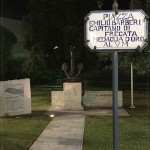 …to see Piazza Emilio Barberi – a place which is breathing history, related to the missions of the Mezzi d’Assalto during the Second World War. Recently we put a spot onto the mission against Suda – “Attacco alla Baia di Suda” – with explosive boats here.
…to see Piazza Emilio Barberi – a place which is breathing history, related to the missions of the Mezzi d’Assalto during the Second World War. Recently we put a spot onto the mission against Suda – “Attacco alla Baia di Suda” – with explosive boats here.
The memorial at the Piazza dedicated to him, shows on the left the map of the Suda bay with the route of the men around Emilio Barberi M.O.V.M. (1917 – 2002) in his home town Forte dei Marmi. He was one of the pilots of the MT boats.
Read more about the timeline of the missions during the Second World War in chapter II.I on page 106-146. The attack of the Souda Bay is featured on page 108-109.
One more 3646 / Type D “Kampfschwimmer” surfaced
by Volker on Feb.28, 2018, under Allgemein
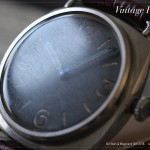 Another Ref. 3646 / Type D “Kampfschwimmer” with anonymous dial has been added into our database: The first specimen of this number group in the year 2018. The watch with Rolex Cal. 618 / Type 1 movement comes with anonymous sandwich dial, blued steel hands and onion shaped Rolex crown (Type 11). Dr. Crott Auctioneers recently gave us a head-up on this Ref. 3646 / Type D, which has been consigned for auction by the family of the first owner, a German “Kampfschwimmer” during the Second World War. Read more about the watch in our watch point.
Another Ref. 3646 / Type D “Kampfschwimmer” with anonymous dial has been added into our database: The first specimen of this number group in the year 2018. The watch with Rolex Cal. 618 / Type 1 movement comes with anonymous sandwich dial, blued steel hands and onion shaped Rolex crown (Type 11). Dr. Crott Auctioneers recently gave us a head-up on this Ref. 3646 / Type D, which has been consigned for auction by the family of the first owner, a German “Kampfschwimmer” during the Second World War. Read more about the watch in our watch point.
Vintage Panerai watches of the Reference 3646 / Type D are featured in our book “The References” 1930’s-1940’s in chapter II.IV (page 398-531).
“Like Men From Mars!”
by Volker on Jan.21, 2018, under Allgemein
In addition to the story published at Fellows, Revolution and wornandwound.com about the Ref. 3646 / Type C watch, which Sgt. George W. Rowson brought home from his service in the 43rd (Wessex) Reconnaissance Regiment, we have gathered some information about the attemp of twelve German “Kampfschwimmer” units (three teams of four) to attack both bridges across the river Waal at Nijmegen in the night of 28/29 September, 1944. The first team was sent to attack the railroad bridge, the second and third team to attack the road bridge.
The story of Sgt. Rowson’s “Radiomir Panerai” is matching with information on the capture of both, second and third team which failed to attack the road bridge of Nijmegen. These eight “Kampfschwimmer” units (of which one of them belonged the Ref. 3646 / Type C) were: Orlowski, Ohrdorf, Weber, Schmidt, Kolbruch, Dyck, Gebel and Halwelka (two KIA, six POW).
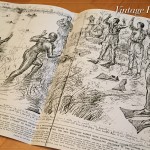 The caption of a drawing by War Artist Captain Bryan de Grineau of the British Army in Holland, to which we give our credits, published in an undated British newspaper (part of a collection of documents, provided to us by German frogmen veteran Karl-Heinz Kiefer during our research of the book “History1”) reads as the following:
The caption of a drawing by War Artist Captain Bryan de Grineau of the British Army in Holland, to which we give our credits, published in an undated British newspaper (part of a collection of documents, provided to us by German frogmen veteran Karl-Heinz Kiefer during our research of the book “History1”) reads as the following:
“Like men from Mars! Amphibious German assault troops captured near Nijmegen, presenting a fantastic appearance in skin-tight rubber suits, extraordinary rubber flappers, rubber skull-caps, and oxygen masks. The whole denoted a daring night attemp to blow up the Nijmegen bridges, the men being detected struggeling upstream in the early morning.”
Furthermore, in this interesting story, the attack of the two Nijmegen bridges, with a focus on the attack of the road bridge (located around 500 metres before the railroad bridge) is written below:
“One of the most daring enemy acts of the war was an attempt on the night of September 28 to blow up the Nijmegen railroad and road bridges spanning the Waal. If successful it would have cut communications between the British troops each side of the river. The men selected for the task – twelve in all – were first-class swimmers who underwent three months special training at Venice. They wore rubber skull-caps, rubber skin-tight suits, and paddle-shaped rubber flaps attached to their boots, which enabled them to cut through the water downstream with remarkable speed. They were also equipped with rubber masks which enabled them to swim long distances under water, being connected with oxygen flasks. Entering the Waal 17.5 miles above Nijmegen at night, they carried three floating charges of powerful Hexanite explosive, each like a twin torpedo, and split up into three parties, one making for the railway bridge, the other two for the road bridge, each charge provided with a time fuse. They were nearly successful but the strength of the eight-knot current prevented them from fixing the charges quite successfully. They made the mistake of swimming back upcurrent. After covering 6.25 miles exhaustion forced them to rest in the shallows. British soldiers saw them and fired, killing two. The remainder surrendered. Our War Artist at Nijmegen illustrates the prisoners coming in. The first charge exploded by the road bridge, doing little damage, the second was heroically rendered harmless by a naval lieutenant who dived under the bridge.”
An interesting photo of the attacked railroad bridge (dated 30 September 1944), attacked by the first group of four German “Kampfschwimmer” units (Bretschneider, Jäger, Olle and Wolchendorf), can be found in the archives of the Imperial War Museum here. Only Bretschneider and Jäger returned to their lines, while Olle and Wolchendorf were caught after the attack and became POW.
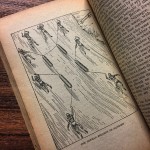 Another small but interesting detail (in terms of the Panerai watches worn by the frogmen of the second and third team) of the well documented attack of the Nijmegen bridges, can be read in the book “The Frogmen” by Waldron & Gleeson, published 1954 and part of our library, on page 119:
Another small but interesting detail (in terms of the Panerai watches worn by the frogmen of the second and third team) of the well documented attack of the Nijmegen bridges, can be read in the book “The Frogmen” by Waldron & Gleeson, published 1954 and part of our library, on page 119:
“The minutes ticked by as the other eight swimmers sat huddled on the bank conversing in low tones, and glancing often at the luminous dials of their underwater watches. When the time came, they put on their oxygen sets and slipped quietly into the water.”
First 2018 “new entry” in our records: a Ref. 3646 / Type C
by Volker on Jan.20, 2018, under Allgemein, Watch Point
wornandwound.com published a Ref. 3646 / Type C watch and its interesting history behind earlier this week. The Vintage Panerai watch with “Radiomir Panerai” dial and Rolex 618 / Type 1 movement marks the first “new entry” in our database in 2018, being another piece of the puzzle added into our records of today known Ref. 3646 / Type C watches. The “Radiomir Panerai” with deep red numbers and markers, blued hands, remaining original strap and nickel-plated brass pin buckle will be auctioned at Birmingham (UK) based Fellows on 30 January, 2018 (lot 188). Read more in their blog here. Revolution also reported about the watch in January here.
In our book “The References” 1930’s-1940’s the watches of the entire reference 3646 are featured in chapter II with more than six hundred pages in the chapters II.I-II.VII. The seven different variations (including the number group 3646 / Type C – page 248-397 – to which this watch belongs) can be found in our reference quickfinder on page 14-20. Pin buckles like the remaining one which comes with this watch are featured in chapter V (page 677-691).
We hope that this watch will find a good new home and remains surfaced in the Vintage Panerai collectors world. [Ralf Ehlers & Volker Wiegmann]
Seasons Greetings from Germany!
by autor on Dec.24, 2017, under Allgemein
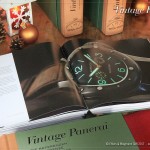 Frohe Weihnachten! Buon natale! Merry Christmas! Joyeux Noël! ¡Feliz Navidad! Ĝojan Kristnaskon! ’N geseënde kersfees! З Рiздвом Христовым! Gëzuar Krishtlindjen! Eguberri on! Nedeleg laouen! Весела Коледа! Chúc mừng Giáng Sinh! Glædelig jul! Häid jõule! メリークリスマス Gleðilig jól! Hyvää joulua! Καλά Χριστούγεννα! Mele kalikimaka! חג מולד שמח Selamat Hari Natal! Nollaig shona! Gleðileg jól! Bon Nadal! 메리 크리스마스 Schéin Krëschtdag! 圣诞节快乐Zalig kerstfeest! Wesołych świąt! Feliz Natal! Crăciun fericit! Счастливого Рождества! Христос се роди! Veselé Vianoce! Maligayang pasko! Veselé vánoce! God Jul! Noeliniz kutlu olsun! Noeliniz kutlu olsun! Kellemes karácsonyi ünnepeket! Са святам Божага Нараджэння!
Frohe Weihnachten! Buon natale! Merry Christmas! Joyeux Noël! ¡Feliz Navidad! Ĝojan Kristnaskon! ’N geseënde kersfees! З Рiздвом Христовым! Gëzuar Krishtlindjen! Eguberri on! Nedeleg laouen! Весела Коледа! Chúc mừng Giáng Sinh! Glædelig jul! Häid jõule! メリークリスマス Gleðilig jól! Hyvää joulua! Καλά Χριστούγεννα! Mele kalikimaka! חג מולד שמח Selamat Hari Natal! Nollaig shona! Gleðileg jól! Bon Nadal! 메리 크리스마스 Schéin Krëschtdag! 圣诞节快乐Zalig kerstfeest! Wesołych świąt! Feliz Natal! Crăciun fericit! Счастливого Рождества! Христос се роди! Veselé Vianoce! Maligayang pasko! Veselé vánoce! God Jul! Noeliniz kutlu olsun! Noeliniz kutlu olsun! Kellemes karácsonyi ünnepeket! Са святам Божага Нараджэння!
Seasons greetings from Germany!
[Ralf Ehlers & Volker Wiegmann]
Just because… how straps looked on 3646 back in 1944
by Volker on Dec.14, 2017, under Allgemein
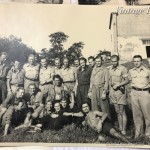 Recently we have been contacted by collectors about a comment on a photo which is published in our book “The References” 1930’s-1940’s on page 514-515. It shows a group of German “Kampfschwimmer” units in the summer of 1944. The orignal paper photo (17.5 x 23.5 cm, see photo on the left) belongs to our library and has been scanned in 2015 to be published in our book on watches of the Ref. 3646 / Type D.
Recently we have been contacted by collectors about a comment on a photo which is published in our book “The References” 1930’s-1940’s on page 514-515. It shows a group of German “Kampfschwimmer” units in the summer of 1944. The orignal paper photo (17.5 x 23.5 cm, see photo on the left) belongs to our library and has been scanned in 2015 to be published in our book on watches of the Ref. 3646 / Type D.
The comment in question was provided to us as following (read grey underlined text):
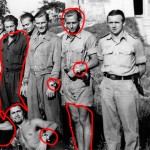 It’s IMPOSSIBLE say the color of one strap viewing one pic in black and white, ALSO when the pic are digitalized and manipulated with color filters. The straps appear here in “clear” colors are simply because the original pic are edited with “warm filters” for get more contrasts in the final results.
It’s IMPOSSIBLE say the color of one strap viewing one pic in black and white, ALSO when the pic are digitalized and manipulated with color filters. The straps appear here in “clear” colors are simply because the original pic are edited with “warm filters” for get more contrasts in the final results.
So, I’m absolutely sure (because I check the image and turned to his real black&white tones, the color of this picture you see here are NOT REAL.
Its easy for a photographer see this image are turned with filters, if you see the skin of the people are unreal, and some clothes are unreal color, because are turned for make more “beautiful” the pic.
The photo, which is part of a photo album that belonged to a veteran who took the photos by himself during his service in the navy, has been published in a preview earlier here. Further photos of this veteran’s album are published on page 274, 284, 414, 474, 475 (chapter II.IV) and page 671 (chapter IV). It is interesting to see how the colors of the straps have changed over the decades, knowing that not many of these original straps survived until today.
The photo above was taken today (December 14, 2017) with a mobile phone to show that we hold the original photo in our library and did not used any filters or manipulated the photo to create a wrong impression to the reader. [Ralf Ehlers & Volker Wiegmann]
From tool watch to war souvenir – the journey of a 3646
by Volker on Nov.25, 2017, under Allgemein
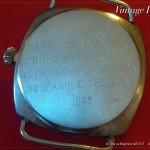 Only a few days until the Important Watches auction of Sotheby’s New York will start. We have published earlier some information about the Ref. 3646 / Type B (lot 946) with “Radiomir Panerai” dial here, which will be part of this sale.
Only a few days until the Important Watches auction of Sotheby’s New York will start. We have published earlier some information about the Ref. 3646 / Type B (lot 946) with “Radiomir Panerai” dial here, which will be part of this sale.
Since we got additional information about the second owners’ history, we see also a well travelled piece of time to find a new owner. Switzerland, Italy, Germany, United Kingdom, Canada (for the most part of its existence) and now an “interstation” in New York City at Sotheby’s. Which route will this Vintage Panerai watch take after the auction is over? We don’t know it for now, and maybe we will never see it again… However, it would be great to see it on a collector’s wrist in the future, since this watch has a lot more to tell than just the time.
By the support of the second owner’s family we received some additional information from the time when this watch changed its function from tool watch into a war souvenir in April 1945. Part of the documentation is an excerpt from the Coldstream Guards regimental diary. It contains details of their tanks crossing the bridge and significantly one of the few references to Tesperhude. This diary tells us after many years: “No.3 Sqn after concentrating at 834362 waited until 1600 hrs. before they were called forward to Tesperhude 802383 where they spent the night.”
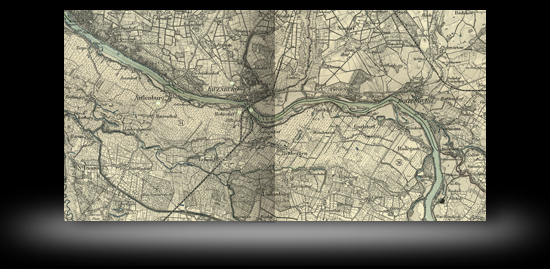
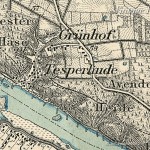 Tesperhude, a small town at the north bank of the river Elbe, made our eyebrows lift when we read this part of the regimental diary. Since we were hunting for historic maps of this area in Germany, we remembered Tesperhude featured on the map which we published on page 826-827 in our book “History2” (see above) together with information about the crossing of the river Elbe by allied forces at the end of April, 1945.
Tesperhude, a small town at the north bank of the river Elbe, made our eyebrows lift when we read this part of the regimental diary. Since we were hunting for historic maps of this area in Germany, we remembered Tesperhude featured on the map which we published on page 826-827 in our book “History2” (see above) together with information about the crossing of the river Elbe by allied forces at the end of April, 1945.
We don’t know anything about the fate of the “Kampfschwimmer” who used this watch in this area where he was sent for duty, as we don’t know it on so many other watches of which all the history behind got lost in the last decades. We don’t know if he survived his mission and became a POW shortly after. We don’t know if the frogman was KIA and the watch was just discovered by those who guarded a bridge. Maybe he was just happy to survive and gave away his diving watch to a sentry who treated him well or maybe he swapped it for something he needed more than a watch then. And maybe he crossed the river Elbe on his way to an allied POW camp on the very same pontoon bridge which he just tried to attack a few days before? All these questions can never be answered. But: The text engraved on the backside of this Ref. 3646 / Type B (even for the fact that Tesperhude was engraved like vocalized Tespahude) let this watch speak a little about what happened, where, when and why.
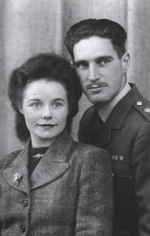 Again, we express our special thanks to the descendants of Captain Coltart who provided us information on the Ref. 3646 / Type B and its story behind. We even received a photo of Captain Coltart and his bride taken on March 17, 1945 – just before his return to the front. This makes it for us even more special to be able to put a face behind an (engraved) name. He made it home and he carried this watch back from the front – as a war souvenir.
Again, we express our special thanks to the descendants of Captain Coltart who provided us information on the Ref. 3646 / Type B and its story behind. We even received a photo of Captain Coltart and his bride taken on March 17, 1945 – just before his return to the front. This makes it for us even more special to be able to put a face behind an (engraved) name. He made it home and he carried this watch back from the front – as a war souvenir.
Switzerland, Italy, Germany, United Kingdom, Canada, United States – which way will this Vintage Panerai watch go into the future? Will we ever see it again?
We hope that this watch will find a good new home and remains surfaced in the Vintage Panerai collectors world. [Ralf Ehlers & Volker Wiegmann]
Sotheby’s New York will auction an engraved Ref. 3646 / Type B
by Volker on Nov.14, 2017, under Allgemein
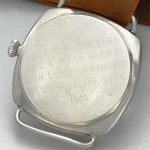 Sotheby’s will auction a Ref. 3646 / Type B with “Radiomir Panerai” sandwich dial, Rolex Cal. 618 / Type 1 movement and engraved caseback (lot 946) in their New York auction Important Watches on 6 December 2017. Read more about the history behind this 3646, which carries you back to the last days of the Second World War at the river Elbe, here in our watch point.
Sotheby’s will auction a Ref. 3646 / Type B with “Radiomir Panerai” sandwich dial, Rolex Cal. 618 / Type 1 movement and engraved caseback (lot 946) in their New York auction Important Watches on 6 December 2017. Read more about the history behind this 3646, which carries you back to the last days of the Second World War at the river Elbe, here in our watch point.
[Photo of the Ref. 3646 / Type B watch with kindly permission / courtesy of www.sothebys.com]
Phillips WINNING ICONS featuring a 3646 and a 6152/1
by Volker on Oct.03, 2017, under Allgemein
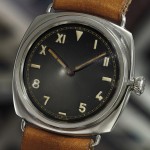 Two Vintage Panerai watches will be up for auction in the WINNING ICONS auction at Phillips on 26 October 2017 in New York. Inbetween a total of 50 watches in the auction with the subtitle “Legendary Watches of the 20th Century”, Lot 16 is a 3646 / Type E with “California Dial” (photo), followed by Lot 39, a Ref. 6152/1 with 8 mm Rolex crown and “Marina Militare” dial. Find further info on both watches in our Watch Point.
Two Vintage Panerai watches will be up for auction in the WINNING ICONS auction at Phillips on 26 October 2017 in New York. Inbetween a total of 50 watches in the auction with the subtitle “Legendary Watches of the 20th Century”, Lot 16 is a 3646 / Type E with “California Dial” (photo), followed by Lot 39, a Ref. 6152/1 with 8 mm Rolex crown and “Marina Militare” dial. Find further info on both watches in our Watch Point.
[Photo with kindly permission / courtesy of www.phillips.com]

